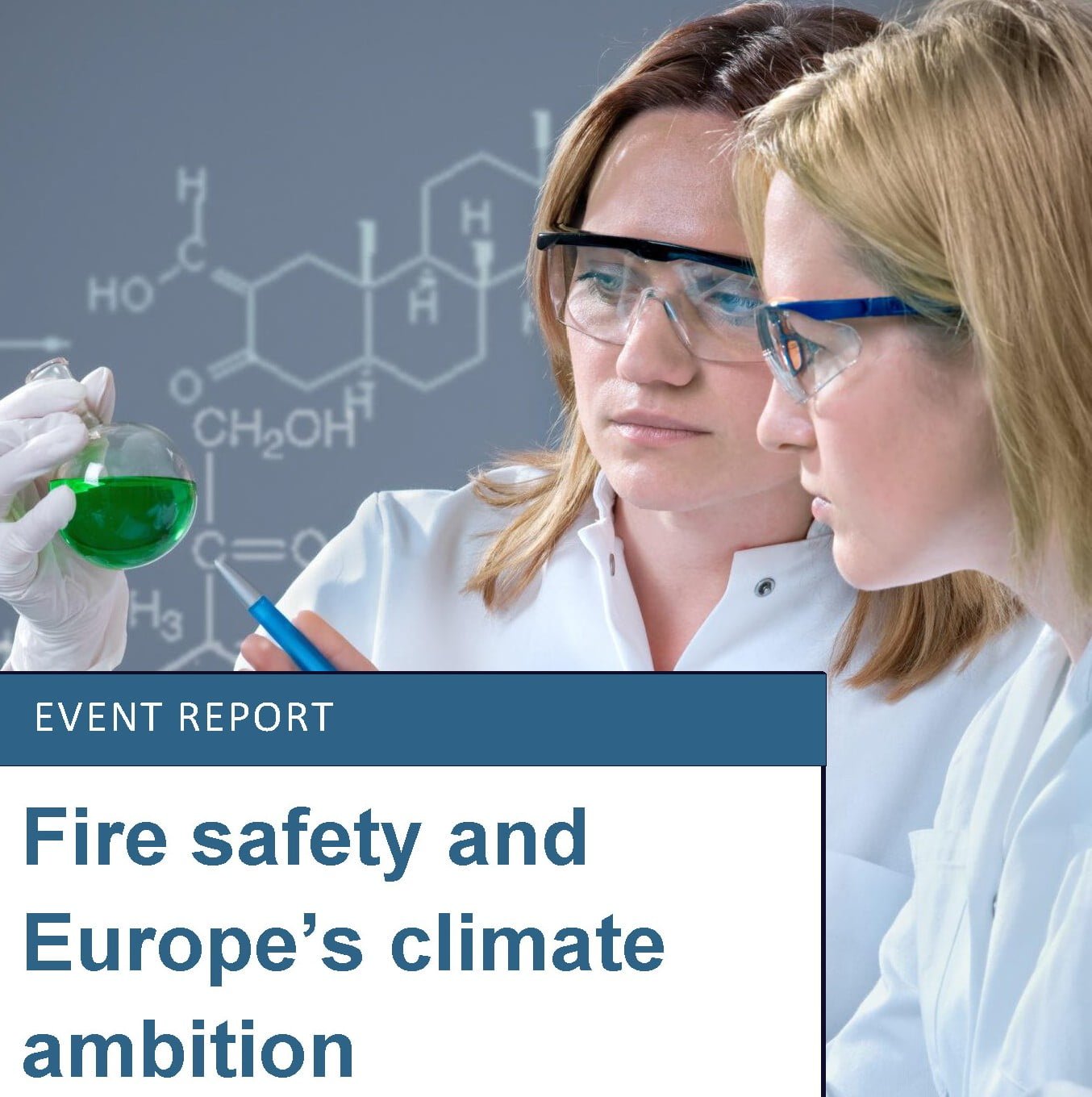
pinfa keynote at European Bureau for Conservation & Development meeting in European Parliament.
Adam, Jarubas, Member of the European Parliament, opened the meeting underlining there can be no green transition without the formulation of clear solutions to guarantee fire safety across the Union. The green transition will mean increased use of electrical energy and of wood as a renewable materials, bringing new and increased fire risks.
Adrian Beard, pinfa Chairman and Clariant, further explained the fire risks of new technologies such as data centres, batteries, renewable electricity. He explained how flame retardants can limit these risks by protecting against ignition: start of fire caused by small heat sources or electrical faults. Standard fire test methods are designed to verify this fire prevention (UL 94 small flame, “glow wire” simulating electric overheating). Flame retardants also slow the spread of fires which do start, so increasing escape time. Flame retardants must not only deliver fire safety and be compatible with performance specifications of materials, they must also offer durability (remain present and effective over product lifetimes, including through product reuse or recycling), environmental sustainability and socio-economic value.
Irantzu Garmendia Aguirre, European Commission Joint Research Centre, presented the work of the JRC developing the EC framework for “Safe and Sustainable by Design” (SSbD). The aim is to create a SSbD way of thinking to design, develop, produce and use chemicals and materials that while providing the desirable function are safe and sustainable throughout the entire life cycle. The need for engagement of the entire chemicals – materials value chain, and importance of integrating safety and sustainability in innovation with functionality were emphasised.
Chris Slootweg, Amsterdam of University, also emphasised the challenge of combining durability of flame retardants (needed for recycling) with avoiding environmental persistence. Leaching of FRs out of products must be avoided. SSbD principles and recycling can be combined with Green Chemistry to develop new sustainable flame retardants.
Laurent Tribut, Schneider Electric, emphasised the essential contribution of the company’s products to electrical safety (e.g. circuit breakers), and so to reducing fire risks. Schneider Electric is extending this further with development of fire and fault detectors to include into electrical boxes. Flame retardants are used only when needed for fire safety, to prevent ignition and fire spread, and this is around half of the company’s materials. Challenges include increasing fire risks with higher voltages in new energy systems, DC power, battery flashover potential at the same time as demanding material requirements for engineering polymers. Flame retardants used must ensure durable protection of product life times of decades, and be recycling-compatible.
Krzysztof Biskup, European Fire Safety Alliance, pointed out that the EU “renovation wave” aimed at achieving higher energy performance and sustainability of buildings, may increase fire risk if not properly addressed. Although fire safety is a competence of Member States, the EU should play an important coordinating role, covering the harmonisation of fire statistics, shared fire safety research, exchange of experiences, and considering fire safety in regulatory documents (e.g. in the Energy Performance of Buildings Directive, Construction Products Regulation). He pointed to the #keepEUfiresafe campaign calling on the EU to develop a Fire Safety Strategy, what was described in the EU Fire Safety Manifesto 2024-2029 (see pinfa Newsletter n°155).
Discussion, moderated by Régine Roncucci, European Parliament Intergroup on Climate Change, Biodiversity and Sustainable Development, noted the need for regulation to push towards sustainable flame retardants. Without this, older, less environmentally friendly options be preferred by much of the market because they are cheaper. The need for a global approach was underlined. Laurent Tribut, Schneider Electric noted that his company and other responsible manufacturers apply demanding EU chemical safety requirements worldwide, but other companies overseas not. Christian Panofen, Huber, and also other participants, underlined that EU manufacturer of cars or electrical equipment will be disadvantaged if cheap imported products contain chemicals which are restricted for use in Europe. Chemicals in imported items need to be regulated and verified.
Adam, Jarubas, Member of the European Parliament, concluded that the meeting had improved understanding of what are flame retardants and how they work. He underlined that there is no safe EU Green Deal without adequate fire safety measures. He supports the European Fire Safety Manifesto and hopes that the EU Parliament elected in June will take this forward. He called the establishment of an EU Fire Safety Strategy.
“Fire safety and Europe’s climate ambition: The role of sustainable flame retardants in Europe’s energy transition”, European Bureau for Conservation & Development, European Parliament, 14th February 2024 https://ebcd.org/events/hybrid-event-fire-safety-and-europes-climate-ambition-the-role-of-sustainable-flame-retardants-in-europes-energy-transition/